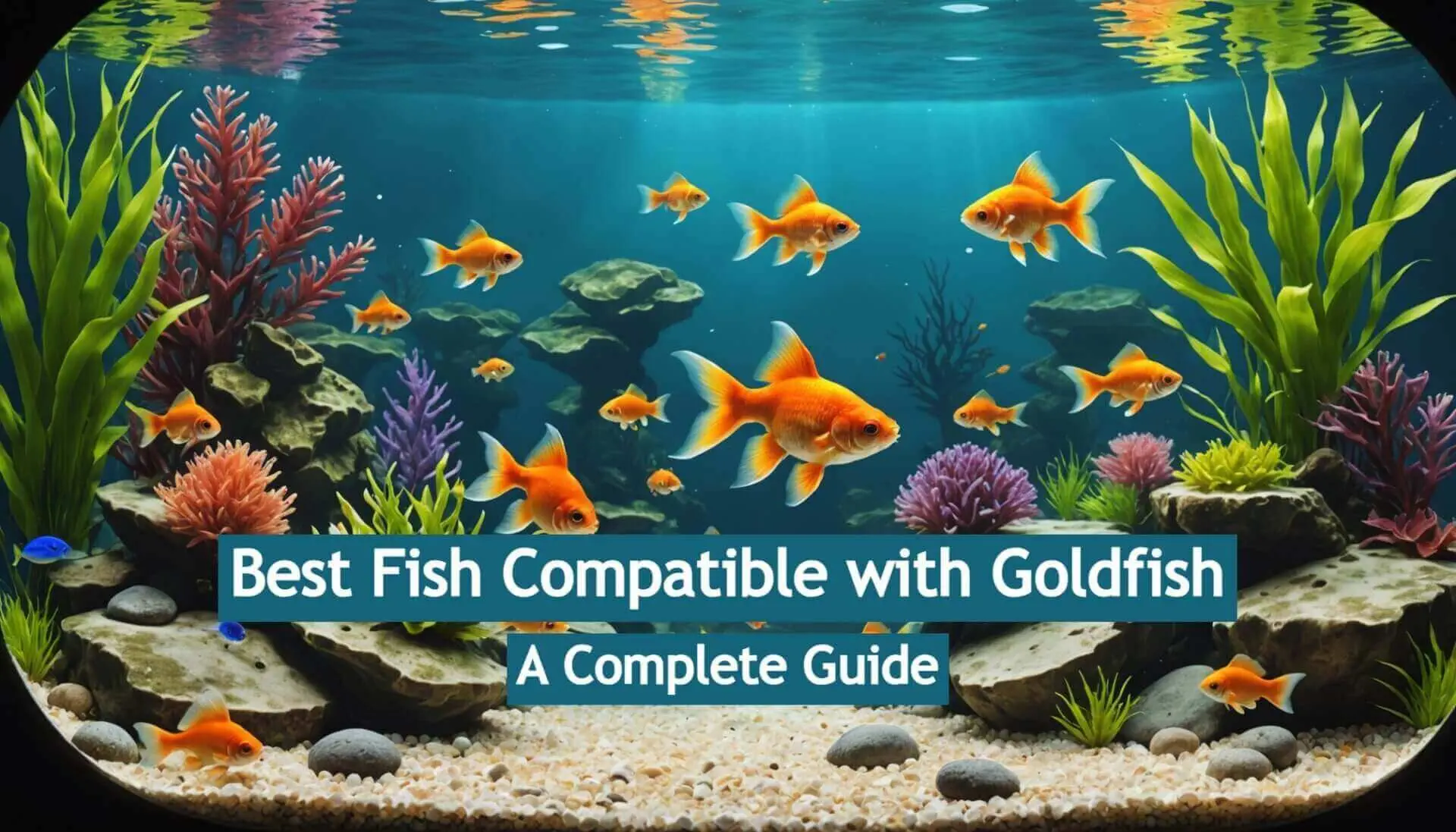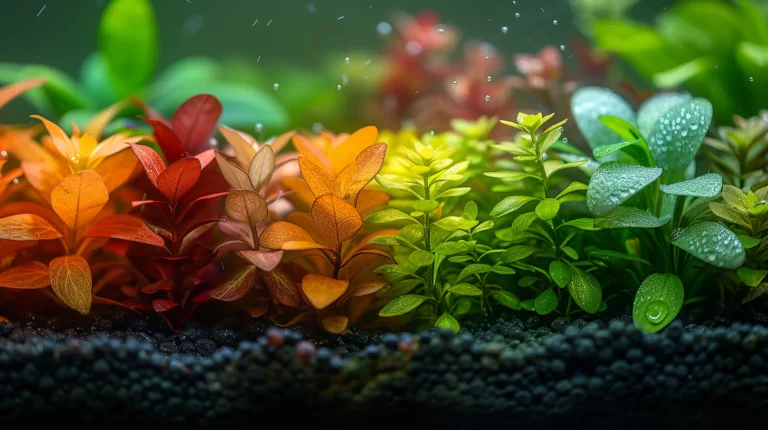If you’re thinking about adding a splash of color to your goldfish tank, you might be wondering which fish compatible with goldfish can join your aquatic friends. Choosing the right tank mates is crucial for creating a peaceful and thriving environment in your aquarium. Goldfish are known for their friendly nature, but not every fish can mesh well with them. Picking the wrong goldfish companions can lead to stress, fights, or even worse!
In this article, we’ll explore the best goldfish tank mates to consider, explore the importance of understanding goldfish behavior, and share tips on how to introduce new fish into your tank smoothly. Whether you’re looking for lively platy fish or peaceful white cloud mountain minnows, we’ve got you covered! Keep reading to ensure your goldfish live happily and healthily with their new friends.
Understanding Goldfish and Their Tank Needs
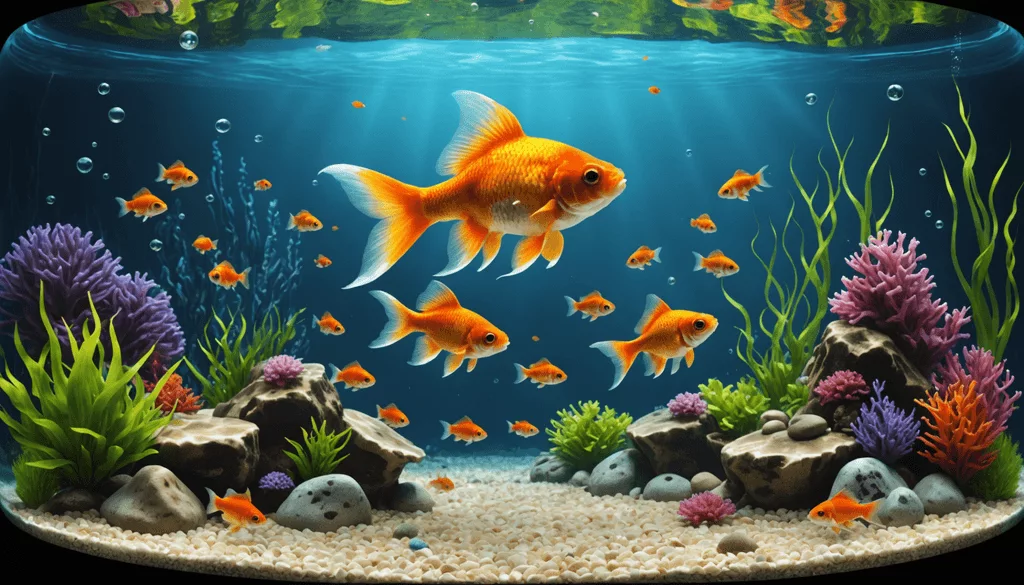
Overview of Goldfish Behavior and Environment
Goldfish are peaceful and social creatures that thrive in groups. They can grow large, reaching lengths of up to 12 inches. Because of their size, they need enough space to swim freely. Goldfish require clean water and prefer colder temperatures, ideally between 65°F to 75°F. A well-filtered aquarium is essential to maintain good water quality, which is crucial for their health and happiness.
Common Myths About Goldfish Compatibility
There are many myths when it comes to goldfish tank mates. A common misconception is that goldfish can live with any type of fish. This is not accurate. Many tropical fish, like bettas and guppies, need warmer water and can be aggressive. Goldfish are best kept with fish that thrive in cooler conditions. (petmedaily)
Importance of Choosing the Right Tank Mates
Choosing the right tank mates is vital for a healthy aquarium. If incompatible species share a tank, it can lead to stress and aggression, harming both the goldfish and their companions. It’s important to select peaceful fish that thrive in similar water conditions. This helps ensure that your goldfish can coexist happily with their companions, enhancing the aquarium experience.
Here’s a table summarizing suitable tank mates for goldfish:
| Tank Mate | Temperature Preference | Behavior |
|---|---|---|
| White Cloud Mountain Minnows | 65-75°F | Peaceful |
| Kuhli Loaches | 65-75°F | Non-aggressive |
| Corydoras Catfish | 65-75°F | Friendly and social |
| Bristlenose Plecos | 65-75°F | Peaceful |
| Zebra Danios | 65-75°F | Active and social |
Remember, goldfish are curious and often scavenge, so their tank mates should also be active and require similar care. This thoughtful selection ensures all fish live harmoniously together.
Best Goldfish Tank Mates to Consider
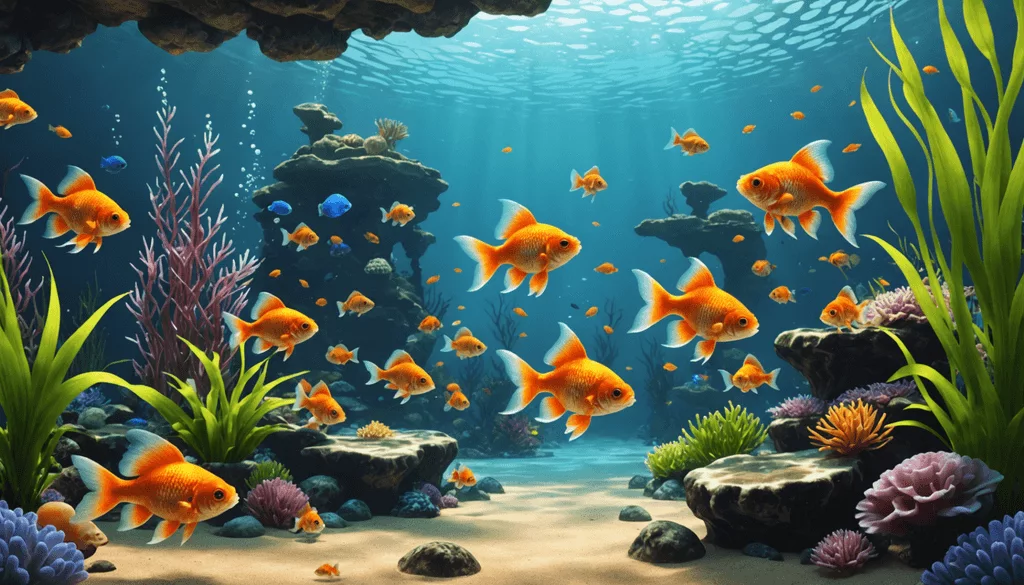
Top 10 Suitable Tank Mates for Your Goldfish
When choosing great goldfish tank mates, it is crucial to select species that can coexist peacefully. Here’s a list of our top ten fish that fit well in a goldfish aquarium:
| Fish | Description |
|---|---|
| Kuhli Loach | Peaceful, bottom-dwelling scavenger that cleans the substrate. |
| Corydoras Catfish | Social fish that thrives in groups and adapts to various waters. |
| White Cloud Mountain Minnow | Hardy and peaceful, great for cooler temperatures. |
| Zebra Danios | Active and fast swimmers that tolerate cold water, adding liveliness. |
| Mystery Snail | Non-aggressive; they help clean the tank by eating algae. |
| Bristlenose Pleco | Peaceful algae-eater that thrives in similar conditions. |
| Endler’s Livebearer | Colorful, non aggressive fish that enrich the aquarium. |
| Platies | Hardy and peaceful, easy to care for in community tanks. |
| Swordtails | Active and friendly, doing well in cooler waters. |
| Rainbowfish | Peaceful and colorful additions that thrive in similar conditions. |
Characteristics of Compatible Fish for Goldfish Tanks
When selecting tank mates for goldfish, consider the following characteristics:
- Peacefulness: Fish must be non-aggressive. Aggressive species can stress goldfish and lead to health issues.
- Size: Tank mates should not be too small. Smaller fish may be seen as food by hungry and curious goldfish.
- Temperature Tolerance: They should thrive in cooler temperatures, ideally between 65-75°F. Goldfish prefer slightly alkaline water, so mates should enjoy similar conditions.
- Social Behavior: Fish that enjoy schooling, such as corydoras and danios, enhance the tank’s activity level.
Fish that Can Live Well with Goldfish: A Detailed Look
Certain fish not only coexist with goldfish but also benefit the tank environment. Kuhli loaches and corydoras catfish help keep the substrate clean by scavenging for food.
Kuhli Loach: These loaches are shy but social. They prefer to hide among plants, contributing to a natural look in the aquarium. Their peaceful nature allows them to live in harmony with goldfish.
Corydoras Catfish: Known for their friendly demeanor, these catfish often swim in groups. They effectively clean up food scraps, ensuring a tidy tank. Their ability to thrive in similar water conditions makes them ideal mates for goldfish.
By choosing compatible fish from this list, aquarists can create a harmonious aquarium. This setup fosters a thriving environment for both goldfish and their companions.
Introducing New Fish to Your Goldfish Tank
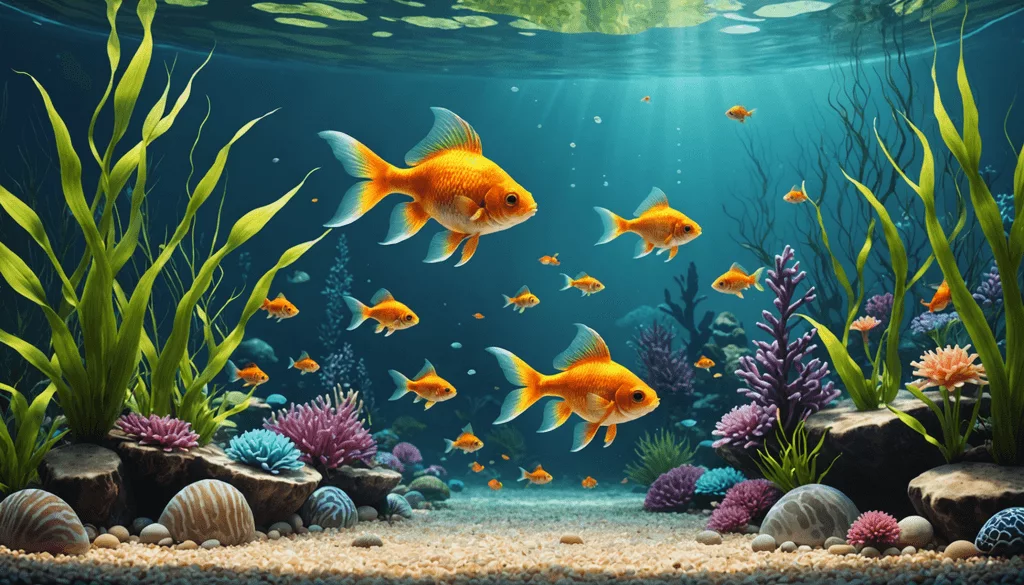
Guidelines for a Smooth Introduction of Tank Mates
When adding new fish to a goldfish tank, a careful approach is vital. First, acclimate new fish to the tank’s water conditions. Float the fish’s bag in the tank for about 15 minutes to equalize temperature. Then, add small amounts of tank water to the bag every five minutes for about 30 minutes. This process helps the fish adjust without shock.
Once acclimated, gently release the new fish into the tank. Use a net to transfer them instead of dropping them directly from the bag. This method reduces stress and prevents introducing unwanted elements into the tank. After introducing the new fish, observe their behavior closely for several days to ensure a smooth transition.
Monitoring Interactions: Signs of Stress or Aggression
Monitoring interactions is crucial after adding new fish. Goldfish are generally peaceful but may show signs of stress. Stress indicators include hiding in corners, rapid gill movement, and lethargy. If a fish hides for long periods, it may feel threatened. (be.chewy)
Aggression can appear as fin nipping or chasing. It’s essential to look for these signs, as they indicate that the new fish may not fit well with your goldfish. If aggression occurs, consider separating the fish to help prevent injury and maintain harmony in the tank.
Tips for a Successful Transition in Your Aquarium
A successful transition involves several helpful strategies. Introduce new fish during feeding times, as hungry fish are more focused on food than on territorial behavior.
Also, provide plenty of hiding spaces in the tank. Plants, rocks, or decorations can give both goldfish and new tank mates retreats when needed. This setup helps fish feel secure, reducing stress.
Regular observation and patience are key during this process. If new fish show signs of settling in, it indicates a positive transition. Following these guidelines increases the chances of a peaceful and thriving community tank.
Maintaining a Healthy Goldfish Tank Environment

Creating a healthy tank environment is vital for goldfish and their compatible tank mates. Goldfish produce a lot of waste, which can harm water quality. Proper care ensures that both goldfish and their companions thrive together. This section covers water quality, essential maintenance practices, and monitoring temperature and pH levels.
Water Quality and Its Effect on Common Goldfish Tank Mates
Water quality greatly influences the health of goldfish and their tank mates. Goldfish release waste, leading to harmful levels of ammonia and nitrates. These high levels can stress fish, making them more prone to disease. Regular water changes are necessary to keep these levels low. It is recommended to change about 10% to 20% of the water weekly.
Here are some tips to maintain water quality:
- Use a good filter: A quality filter keeps the water clean by removing waste and toxins.
- Test water regularly: Use a water testing kit to monitor ammonia, nitrite, and nitrate levels.
- Add live plants: Plants absorb excess nutrients and provide hiding spots for fish.
Maintaining clean water benefits all fish in the tank. Healthy water leads to healthier fish and better interactions among tank mates.
Essential Tank Maintenance Practices for Goldfish
Regular maintenance keeps the goldfish tank in top condition. Owners should follow these practices:
- Filter Maintenance: Check and clean filters regularly to ensure they work effectively.
- Monitor Fish Behavior: Observe goldfish and their companions for signs of stress or aggression.
- Feed Properly: Overfeeding leads to excess waste. Feed fish only what they can eat in a few minutes.
- Clean the Tank: Remove debris and algae. Use a soft sponge or algae scraper, avoiding harsh chemicals.
With proper maintenance, goldfish and their tank mates can live happily and healthily.
Monitoring Temperature and pH Levels for Compatibility
Goldfish thrive in specific temperature and pH ranges. They prefer temperatures between 65°F and 75°F (18°C to 24°C). Keeping the temperature stable is crucial. Sudden changes can lead to stress.
The ideal pH level for goldfish is around 7.0 to 8.4. Testing kits are available to monitor pH levels regularly. If the pH is too low or too high, it can affect goldfish and their tank mates.
Here are some ways to maintain proper temperature and pH:
- Use a heater or chiller: A heater raises the temperature, while a chiller cools the tank.
- Regular testing: Test temperature and pH weekly, especially after water changes.
- Adjust gradually: If adjustments are needed, do them slowly to avoid shocking the fish.
Keeping temperature and pH stable is essential for compatibility with tank mates. Goldfish prefer other cold-water fish that thrive in similar conditions.
| Parameter | Goldfish Range |
|---|---|
| Temperature | 65°F to 75°F (18°C to 24°C) |
| pH Level | 7.0 to 8.4 |
Expert Recommendations for New Goldfish Owners

Recap of Best Practices for Tank Mates
When choosing fish compatible with goldfish, follow these best practices. First, select fish that have similar water needs. Goldfish thrive in cooler water, usually between 65°F to 75°F (18-24°C). A pH of 7.0 to 7.5 is ideal for all fish in the tank.
Second, ensure that tank mates are non-aggressive. This reduces stress for your goldfish. Suitable goldfish tank mates include Corydoras catfish, Kuhli loaches, and Zebra danios. These peaceful fish can coexist well with goldfish.
Third, regularly monitor the behavior of all fish. Watch for signs of stress such as hiding, nipping fins, or unusual swimming. If you see these signs, it may be necessary to separate the fish to protect your goldfish.
Resources for Further Reading on Goldfish Care
New goldfish owners can find various resources for in-depth information. Online guides from reputable aquarium sites offer valuable insights into tank maintenance and fish compatibility.
Some recommended resources include:
- Aquarium Fish Depot: This site provides articles on goldfish care, including water quality management and feeding tips.
- Pango Vet: This site features expert insights on goldfish tank mates, including species that thrive together.
Additionally, local pet stores often have printed guides and knowledgeable staff to assist with goldfish care questions. Reading books on freshwater aquariums can also provide detailed information on maintaining a thriving goldfish tank.
Conclusion
Choosing the right tank mates for goldfish is essential for a happy and thriving aquarium! We’ve discovered that goldfish are generally peaceful and can live well with various compatible fish like white cloud mountain minnows, platy fish, and dojo loaches. Plus, maintaining a healthy tank environment by monitoring water quality and temperature is crucial for your fish’s health.
Now that you’re equipped with the knowledge of suitable goldfish tank mates, it’s time to dive into creating your perfect aquatic community! Keep exploring and learning, and you’ll turn your goldfish tank into a lively and colorful underwater paradise!
FAQs
1. What is the ideal tank size for goldfish and their tank mates?
Goldfish require at least 10-20 gallons of water for each fish. Adding additional goldfish or other companions means you need to provide more space, ideally 30-50 gallons for a group of fish.
2. Can I add tropical fish with goldfish in the same tank?
While goldfish thrive in cooler water temperatures, some tropical fish like the white cloud minnows or weather loach can live in similar environments. However, avoid adding tropical fish species that prefer warm water.
3. What are some good tank mates for goldfish?
Some great companions for goldfish include hardy species like the bulldog pleco, cherry shrimp, and giant danios. These fish are peaceful and thrive in the same water conditions, without competing for food or space.
4. How can I ensure my goldfish and their companions have a peaceful tank environment?
To keep goldfish in peace with their tank mates, choose peaceful species like cory catfish or checker barbs. Avoid nippy fish, as they can harm goldfish fins or cause stress. Make sure the tank has enough space and plenty of hiding places. Additionally, maintaining stable water parameters and proper filtration is key to ensuring a harmonious environment for all the tank’s inhabitants. While goldfish thrive with non-aggressive companions, it’s important to research the compatibility of species beforehand. For example, when selecting the best tank mates for bettas, consider peaceful, small fish or invertebrates that won’t provoke them or outcompete them for food.
5. Can I add smaller fish to my goldfish tank?
Yes, smaller fish like ghost shrimp or freshwater snails can be good additions, as long as the tank has sufficient space and food sources. Be mindful of your goldfish’s curiosity and feeding habits, as they might eat smaller tank mates if not properly fed.
6. What is the best food for goldfish and their tank mates?
Goldfish are opportunistic feeders, so providing them with a varied diet, including algae wafers and brine shrimp, is essential. Ensure all tank mates, such as cory catfish or shrimp, are fed adequately to avoid food competition.

